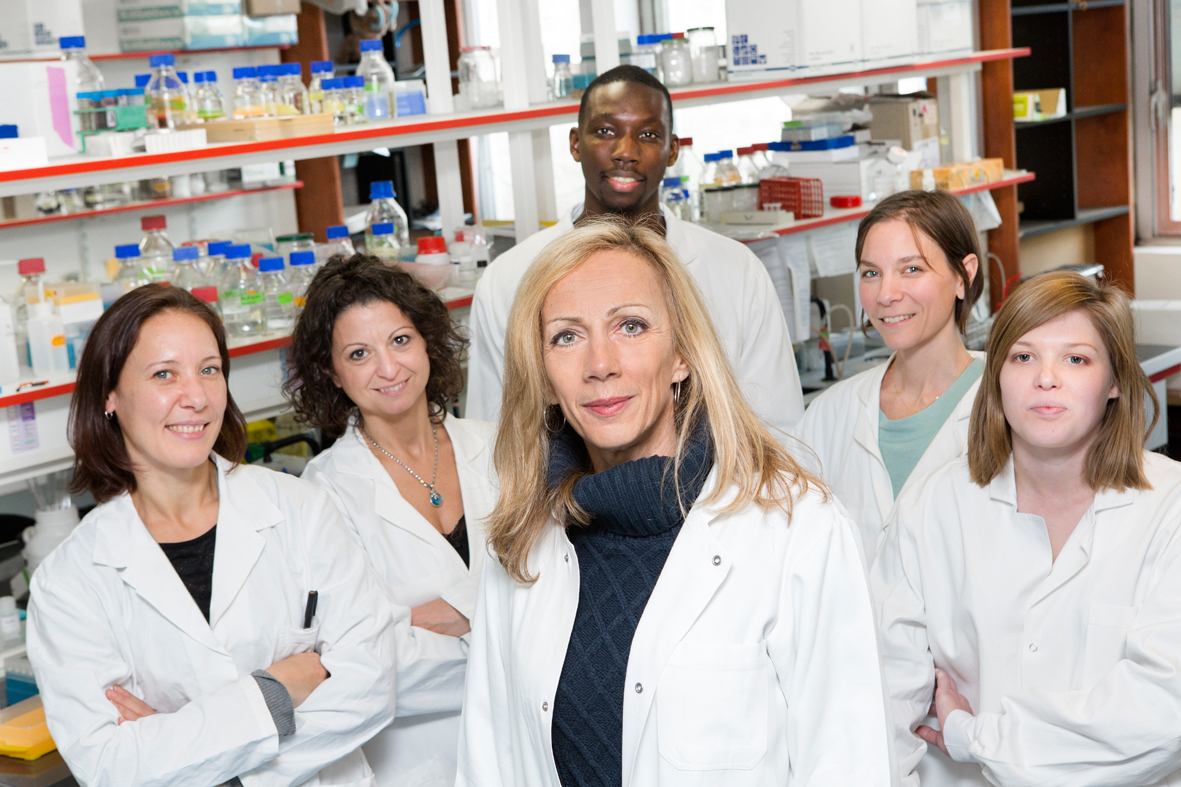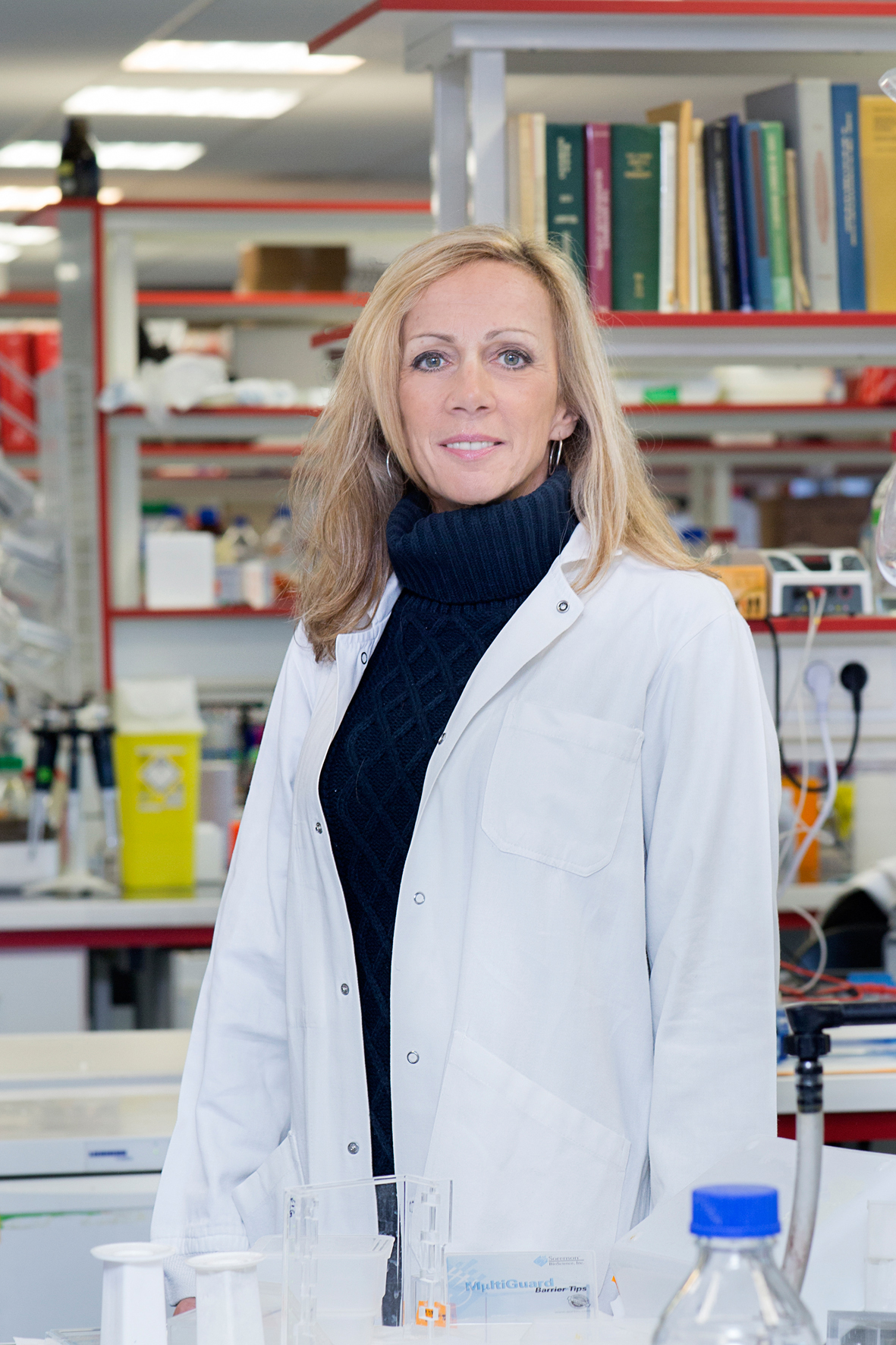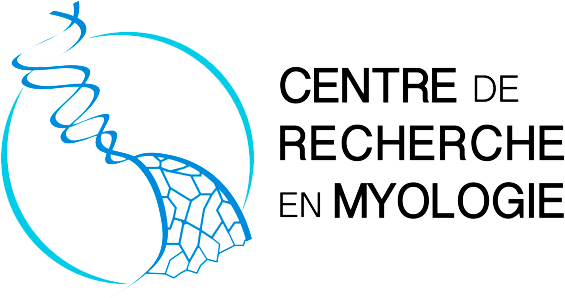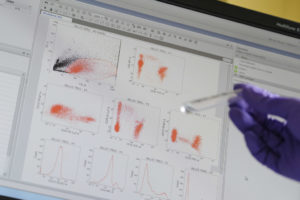Gene therapy for DMD and pathophysiology of skeletal muscle
Gene therapy for DMD and pathophysiology of skeletal muscle
The dystrophinopathies are pathologies caused by anomalies in the DMD gene encoding for a protein called dystrophin. This protein is absent in Duchenne muscular dystrophy (DMD) while it is present but qualitatively and/or quantitatively altered in the Becker muscular dystrophy (BMD). It is known that the modular structure of dystrophin tolerates large internal deletions. This observation led to the development of two main therapeutic strategies: classical gene therapy with transfer of functional mini- or micro-dystrophin cDNAs in muscles, and targeted exon skipping. Exon skipping strategy, using antisense molecules or gene therapy with AAV-U7, converts an out-of-frame mutation into an in-frame mutation leading to an internally deleted dystrophin. However, in preclinical DMD models, dystrophin restoration by AAV-U7-mediated exon-skipping therapy was shown to drastically decrease after one year in treated animals. We recently showed that pre-treating dystrophic mice muscle with a single dose of peptide-phosphorodiamidate morpholino (PPMO) antisense oligonucleotides led to transitory dystrophin expression at the sarcolemma and allowed efficient maintenance of AAV genomes enhancing significantly the long-term effect of AAV-U7 therapy. Currently, we evaluate this combined treatment by addressing the benefit of systemic injection of therapeutic PPMO and AAV-U7 vector to a severe DMD model (dystrophin/utrophin double-knockout mouse (dKO)). These mice suffer from a much more severe and progressive muscle wasting, heart and diaphragm functions, impaired mobility and premature death, mimicking pathophysiology of DMD patients.
Phenotypic and genomic characterization of Becker dystrophy patients with 45 to 55 exons deletion
BMD displays 1/30000 live births incidence and is characterized by a progressive muscular dystrophy with or without cardiomyopathy. We present a population of 49 BMD patients with a DMD gene in-phase deletion of exons 45 to 55 (BMDdel45-55). As described, 63% of Duchenne patients are eligible to a multiexon skipping therapy by skipping exons 45 to 55 transforming DMD to BMDdel45-55 patients, it is thus crucial to study the genomic/phenotype link in this BMD cohort. Interestingly, emerging regulatory actors as lncRNA are localized in introns 44 and 55. Thus, the specific neo-introns of each patient could create or modify the lncRNA and/or RNA non-coding sequences. The objective of this study is to identify modifier factors involved in phenotypic variability in BMDdel45-55 patients We performed (i) a phenotypic characterization of 49 patients, (ii) a lncRNA profile in 40/49patients and (iii) a WGS in 19/49patients.
Proteins connecting voltage sensing with muscle mass homeostasis
Deciphering the mechanisms governing skeletal muscle plasticity is essential for understanding pathophysiological processes, including muscle dystrophy and age-related sarcopenia. Muscle activity reverses atrophy, but the connection between these processes is unknown. The voltage sensor CaV1.1 has a central role in excitation–contraction coupling, raising the possibility that it may also initiate the adaptive response to changes in muscle activity. We revealed the existence of a transcription switch for the beta subunit of CaV1.1 (CaVβ1) that depends on the innervation state of the muscle. We showed that denervation increases the expression of a novel embryonic isoform, CaVβ1E. CaVβ1E boosts downstream GDF5 signaling to counteract muscle loss after denervation. We reported that aged muscle expresses significantly reduced levels of CaVβ1E and that CaVβ1E overexpression in aging muscle reduces mass waste by rescuing GDF5 expression. Crucially, we also identified human CaVβ1E and showed a tight negative correlation between hCaVβ1E expression and age-related muscle decline in people, suggesting that the mechanisms underlying muscle mass homeostasis are conserved across species. Actually, we have preliminary data indicating a promising therapeutic approach to improve age-related muscle waste due to the implementation of the recombinant protein (rGdf5).


Contacts :

| Name | Position | ORCID |
|---|
- Silvia Brunelli, Clara de Palma, Sestina Falcone, Serena Pisoni, Sara Cipolat, et al.. Nitric oxide inhibition of Drp1-mediated mitochondrial fission is critical for myogenic differentiation. Cell Death and Differentiation, 2010, ⟨10.1038/cdd.2010.48⟩. ⟨hal-00535922⟩
- France Piétri-Rouxel, Christel Gentil, Stéphane Vassilopoulos, Dominique Baas, Etienne Mouisel, et al.. DHPR alpha1S subunit controls skeletal muscle mass and morphogenesis.. EMBO Journal, 2010, 29 (3), pp.643-54. ⟨10.1038/emboj.2009.366⟩. ⟨inserm-00515849⟩
- France Piétri-Rouxel, Christel Gentil, Stéphane Vassilopoulos, Dominique Baas, Etienne Mouisel, et al.. DHPR α1S subunit controls skeletal muscle mass and morphogenesis. EMBO Journal, 2009, 29, pp.643 - 654. ⟨ensl-00817432⟩
- Christel Gentil, Sébastien Le Jan, Josette Philippe, Jacques Leibowitch, Pierre Sonigo, et al.. Is oxygen a key factor in the lipodystrophy phenotype?. Lipids Health Dis, 2006, 5, pp.27. ⟨10.1186/1476-511X-5-27⟩. ⟨inserm-00122143⟩
- Olivier Neyrolles, Rogelio Hernández-Pando, France Pietri-Rouxel, Paul Fornès, Ludovic Tailleux, et al.. Is Adipose Tissue a Place for Mycobacterium tuberculosis Persistence?. PLoS ONE, 2006, 1, pp.e43. ⟨10.1371/journal.pone.0000043⟩. ⟨pasteur-00130276⟩
- Caroline Petit, France Piétri-Rouxel, Annick Lesne, Thierry Leste-Lasserre, Dominique Mathez, et al.. Oxygen consumption by cultured human cells is impaired by a nucleoside analogue cocktail that inhibits mitochondrial DNA synthesis. Mitochondrion, 2005, 5 (3), pp.154-161. ⟨10.1016/j.mito.2004.09.004⟩. ⟨hal-03140777⟩
- G. Leclerc, E. Nicolle, A. El Hadri, M.-C. Guillaume, F. Pietri-Rouxel, et al.. Synthesis and bovine beta-3 adrenergic agonistic activities of a novel series of aryloxypropanolamines.. Archiv der Pharmazie / Arch Pharm Pharm Med Chem; Arch Pharm Chem Life Sci; Arch Pharm (Weinheim), 2001, 56, pp.517-522. ⟨hal-00123266⟩
- V. Zilberfarb, F. Pietri-Rouxel, Ralf Jockers, Simon Krief, Claude Delouis, et al.. Human immortalized brown adipocytes express functional bêta3-adrenoceptor coupled to lipolysis. Journal of Cell Science, 1997, 110, pp.801-807. ⟨hal-02686235⟩
Patents
WO2016198676A1 publication Critical patent/WO2016198676A1 COMBINED THERAPY FOR DUCHENNE MUSCULAR DYSTROPHY Lorain et al.
EP18 184861.5 and 19 152677.1 COMPOSITIONS FOR THE TREATMENT OF SARCOPENIA OR DISUSE ATROPHY Piétri-Rouxel & Falcone
EP19207561.2.COMBINED THERAPY FOR MUSCULAR DISEASES Piétri-Rouxel & Falcone









